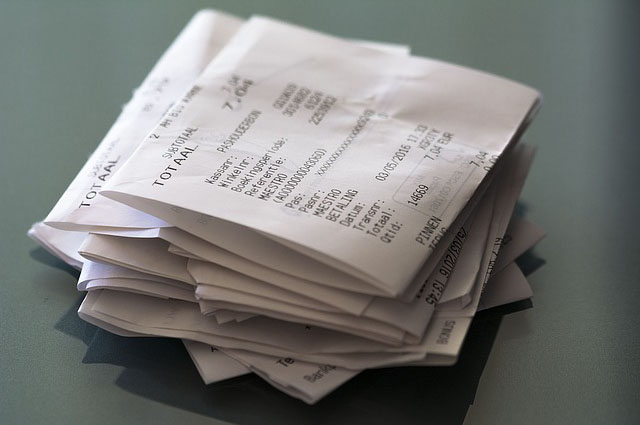
The New Jersey Data Book reports the number of registered voters in each election year, as well as the party affiliations of the registered voters.
Data have been gathered from reports of the Elections Division, New Jersey Department of State with party registrations provided by the county superintendents of elections or boards of election.

All school data are from the New Jersey Department of Education.
Local school data are presented separately from municipal data because:
- school district boundaries do not always coincide with municipal boundaries, and
- school district finances are administered on a school year basis. A 2015 date indicates information for the 2014-15 school year.
In most cases, the boundaries of a school district are coterminous with the boundaries of a single municipality. However, many school districts are too small to provide full services to all grades from kindergarten through high school, so they either send some of their pupils to another school district and make tuition payments from their budget to that “receiving district”, or they become part of a regional or consolidated school district, in which case they share in the costs of that district according to statutory formulas.
Regional and consolidated districts may provide any combination of grades from Kindergarten through Grade 12, but most are either 7-12 or 9-12.

Property Tax Burden has been measured in two ways:
- the Equalized Property Tax Rate and
- the Property Tax as an Estimated Percentage of resident Income
Equalized, or full value, property tax rates are shown in every municipality for the following purposes:
- County Government
- Municipal government
- School purposes
- State tax rebates (negative)
- Net tax rate
For the county, municipal and school taxes, the amount of the tax levy shown in the county abstract of ratables is divided by the Equalized Valuation of the municipality and multiplied by 100 to calculate the equalized tax rate.

In order to provide a view of poverty in communities, the New Jersey Data Book reports the results of two federal programs administered in the state to aid low-income families. These measures provide a view of childhood poverty in particular, within the municipal footprint of New Jersey. Insights to where poverty is experienced can guide local policy makers and advocates.

New Jersey population data is based on the decennial Census which counts the U.S. population every ten years. For non-census years that do not include the U.S. Census population count, estimated data are from the New Jersey State Data Center or from the American Community Survey (ACS) conducted by the Bureau of the Census, using the 5-year sampling.
Governments and businesses use census counts for funding allocations, to inform policy, and to aid in city planning. The calculations frequently rely on the ACS and Census counts, with notations as to which population count is used. Accurate reporting of the population down to the municipal level is possible using the decennial Census, the 5-year estimated ACS population figures, or the estimates of the New Jersey State Data Center.
Changes in measures of the population and demographics can provide insights into the changing structure, social and economic challenges, and opportunities facing municipalities in New Jersey.
Use the New Jersey Data Book to find New Jersey population data by municipality, county, Congressional District, or Legislative District.

Except as indicated below, all Census data are as reported by the Bureau of the Census. Estimated data are from the American Community Survey conducted by the Bureau of the Census during noted years. New residential building permits and certificates of occupancy are from the New Jersey Construction Reporter, Annual report.

Pellentesque in ipsum id orci porta dapibus. Mauris blandit aliquet elit, eget tincidunt nibh pulvinar a. Mauris blandit aliquet elit, eget tincidunt nibh pulvinar a. Praesent sapien massa, convallis a pellentesque nec, egestas non nisi. Mauris blandit aliquet elit, eget tincidunt nibh pulvinar a. Curabitur arcu erat, accumsan id imperdiet et, porttitor at sem.

Taxable property value, historically known and reported as Equalized Valuation, is the estimated true value of taxable property in a municipality or school district. Municipal tax assessors place a tax assessment on every parcel of real property within their municipality. The relation of the assessments to the actual true value of the property may vary from place to place. In order to provide for the fair distribution of State school aid, the Department of the Treasury has implemented a system to estimate the true value of property in every municipality and school district – the value that an informed buyer would pay and a willing seller would accept. Actual sales prices of properties are compared with their tax assessments and the results are consolidated for each municipality. Adjustments then are made to convert the tax assessor’s total values to the estimated full true value for the entire municipality – the Equalized Valuation.

Unemployment measures the relative distribution of economic well-being in an economy. When unemployment is low, many people who want to work have jobs and are earning wages, thus enabling them to consume goods and services. In contrast, if unemployment is high, fewer people are earning wages, and are not purchasing or consuming the goods and services they desire. Employment data provides a surrogate measure of household wealth. The data presented in the New Jersey Data Book is provided by the New Jersey Department of Labor and Workforce Development, Labor Planning and Analysis as of March, and derived from The Bureau of Labor Statistics and the U.S. Census.

The votes cast for each candidate. Votes are reported in the year that the ballot was cast. Gubernatorial, State Senate and General Assembly elections for the state are reported in the year the vote is cast. Similarly, Presidential, US Senate and Congressional election results are reported in the year that votes were cast.
Data have been gathered from reports of the Elections Division, New Jersey Department of State with party registrations provided by the county superintendents of elections or boards of election. In a few municipalities split into more than one legislative or congressional district, the votes shown may not add to the official county, total since Federal absentee ballots are tabulated only on a municipal-wide basis. In split municipalities, votes have been apportioned among legislative and congressional districts in proportion to total population.

Crime data in New Jersey is based on the annual Uniform Crime Reporting Program (UCR) by individual municipal law enforcement agencies, reported by the New Jersey State Police or the Federal Bureau of Investigation, depending on availability. While the New Jersey UCR reporting typically lags two years (for example, the 2011 UCR was generated in 2013), it is a reliable and important measure of incidents of crime in New Jersey municipalities. The program generates a reliable set of criminal statistics for use by law enforcement, and importantly as a leading social indicator.

The area and density of New Jersey is based on the decennial U.S. Census reporting of area and the New Jersey Department of Labor and Workforce Development report of population estimates.
Population density reflects the number of people of people per square mile in a specific municipality, county, Congressional or Legislative district. Based on the 2010 Census, New Jersey is the densest state in the Nation.